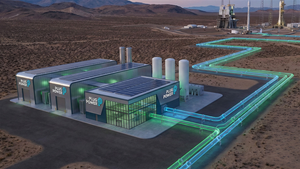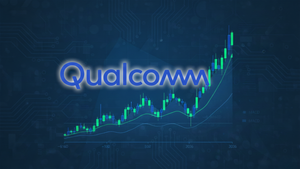
The global mining sector is currently experiencing a robust rally, fueled by a dramatic surge in gold and silver prices and a palpable resurgence in investor confidence. As of November 12, 2025, precious metals have cemented their status as safe-haven assets and inflation hedges, driving significant gains for mining companies and attracting substantial capital inflows. This ongoing momentum signifies a pivotal shift in market sentiment, with investors increasingly looking to tangible assets amidst persistent global uncertainties and evolving economic landscapes.
The rally is not merely speculative; it is underpinned by a confluence of macroeconomic factors, geopolitical tensions, and structural demand shifts. Both gold and silver have hit multi-year highs, with gold firmly above the $4,100 per ounce mark and silver trading robustly around $52-$53 per troy ounce. This impressive performance has translated directly into the equity markets, with the NYSE Arca Gold Miners Index (GDMNTR) reportedly up over 50% year-to-date, indicating that the mining industry is not just recovering, but thriving.
Unpacking the Precious Metals Phenomenon: A Detailed Look at the Rally
The current surge in precious metal prices represents a remarkable period for the mining industry. Gold, which crossed the significant $3,000 threshold in March 2025, has since continued its ascent, peaking at an all-time high of approximately $4,530.00 per ounce on October 17, 2025. Its year-to-date gain in 2025 stands impressively at 56-57%. Silver has mirrored this strength, hitting its own record high of around $54.49 per ounce in mid-October 2025, and boasting an even more staggering year-to-date gain of 73.28%. These figures underscore a powerful and sustained upward trend that has captivated the financial markets throughout 2025.
Several key drivers are propelling this rally. Expectations of interest rate cuts by the US Federal Reserve are paramount; with probabilities for a December 2025 cut hovering around 66-70%, the reduced opportunity cost of holding non-yielding assets like gold and silver makes them significantly more attractive. Concurrently, a weaker US dollar has provided further tailwinds, enhancing the purchasing power of other currencies for these commodities. Geopolitical tensions, particularly escalating conflicts in Eastern Europe and the Middle East, alongside persistent trade disputes, continue to channel investors towards traditional safe havens. Economic uncertainties, coupled with lingering inflationary pressures, reinforce gold and silver's appeal as reliable hedges against market volatility and wealth erosion.
Adding to the demand, central banks globally are accelerating their diversification strategies, moving away from dollar-denominated reserves and actively increasing their gold holdings, thereby creating a structural floor for prices. For silver, robust industrial demand, especially from the electronics, solar panel, and electric vehicle battery sectors, combined with structural supply tightness, suggests a higher long-term price floor. The recent designation of silver as a "critical mineral" further elevates its strategic importance. The mining sector broadly benefits from the global energy transition, which fuels demand for a wide array of critical minerals, and signs of a softening US labor market are also bolstering expectations for a more dovish Fed, further supporting precious metals.
Initial market reactions have been overwhelmingly positive. Precious metals Exchange Traded Funds (ETFs) are experiencing strong inflows, and institutional investors are increasingly engaging with the segment. Risk capital is returning to the mining arena, with evolving capital deployment strategies prioritizing long-term benefits. Major industry conferences throughout 2025, such as PDAC and MINEXCHANGE, have highlighted themes of green mining technologies, sustainable exploration, critical minerals, and ESG factors, reflecting a broader industry shift towards responsible and strategic growth. Notable corporate activities include Coeur Mining (NYSE: CDE) CEO discussing growth following a significant $7 billion deal with New Gold (NYSE: NGD) in early November, and the US government backing a $191 million critical minerals initiative, signaling robust governmental support for the sector.
Winners and Losers: Companies Navigating the Golden Tide
The current precious metals boom presents clear winners within the mining sector, primarily companies with significant exposure to gold and silver reserves. Major gold producers such as Barrick Gold (NYSE: GOLD), Newmont Corporation (NYSE: NEM), and Agnico Eagle Mines (NYSE: AEM) are poised to see substantial increases in revenue and profitability due to higher realized prices for their output. These companies, with established operations and proven reserves, can leverage the elevated commodity prices to strengthen their balance sheets, fund exploration, and potentially increase shareholder returns through dividends or buybacks. Similarly, silver-focused miners like Pan American Silver (NASDAQ: PAAS) and Wheaton Precious Metals (NYSE: WPM), a streaming company, are experiencing a significant uplift, benefiting directly from silver's dual role as a precious metal and an increasingly vital industrial commodity.
Beyond pure precious metals, companies engaged in the extraction of critical minerals – a category that now includes silver – are also seeing enhanced investor interest. Firms with strategic reserves of minerals essential for the global energy transition, such as lithium, copper, nickel, and rare earth elements, are attracting significant capital. The US government's recent $191 million push for critical minerals underscores the strategic importance of these resources, providing a favorable environment for companies contributing to the supply chain of electric vehicles, renewable energy infrastructure, and advanced technologies. This broader demand benefits diversified miners with portfolios extending beyond traditional precious metals.
While the overall sentiment is positive, smaller, high-cost producers or those with limited reserves might face challenges if operational costs escalate disproportionately to price gains, or if they struggle to secure financing for expansion. However, the prevailing trend suggests that even these companies could find new opportunities for investment and growth, particularly through mergers and acquisitions. The Coeur Mining (NYSE: CDE) and New Gold (NYSE: NGD) deal in early November 2025 highlights a trend of consolidation and strategic positioning within the sector to capitalize on the favorable market conditions and achieve economies of scale.
Companies that have invested heavily in sustainable practices and ESG (Environmental, Social, and Governance) initiatives are also likely to gain an edge. Investor sentiment in 2025 increasingly demands transparency and accountability, making ESG-compliant miners more attractive to a broader pool of capital. This focus on responsible mining could differentiate companies and enhance their long-term value, aligning with evolving global investment standards and regulatory expectations.
Broader Implications: A Shifting Landscape for Global Finance
The ongoing rally in the mining sector, driven by gold and silver, is more than just a commodity price surge; it reflects and contributes to broader shifts in the global financial landscape. This event fits squarely into the overarching trend of de-dollarization and diversification of central bank reserves, with emerging market institutions notably accelerating their gold purchases. This structural shift provides a significant long-term support for gold prices, establishing a new baseline and diminishing reliance on a single reserve currency. The rally also highlights the growing importance of tangible assets as a hedge against the uncertainties of fiat currencies and geopolitical instability.
The ripple effects extend across various industries. Increased profitability for miners is likely to spur greater capital expenditure in exploration and development, potentially leading to new discoveries and job creation in mining regions. This could also drive innovation in mining technologies, particularly in automation, AI, and sustainable extraction methods, as companies seek to optimize operations and reduce environmental impact. Furthermore, the strong demand for silver, boosted by its "critical mineral" designation, has significant implications for sectors like renewable energy (solar panels), electric vehicles, and electronics, ensuring a steady supply of this crucial input while also potentially increasing costs for manufacturers.
Regulatory and policy implications are also noteworthy. The US government's backing of critical minerals initiatives indicates a strategic national interest in securing supply chains, which could translate into supportive policies, funding, and expedited permitting for domestic mining projects. This focus on critical minerals is a global trend, as nations seek to reduce reliance on single sources and ensure energy transition goals are met. Historically, periods of high inflation and geopolitical tension have consistently seen gold and silver perform strongly, reinforcing their role as counter-cyclical assets. The current environment, with its unique blend of monetary policy expectations, global conflicts, and energy transition demands, echoes these historical precedents but with added layers of complexity and opportunity.
The rally also underscores a renewed investor confidence in the intrinsic value of physical assets, moving beyond purely growth-oriented or speculative investments. This shift could lead to a re-evaluation of portfolios, with a greater allocation towards commodities and commodity-producing equities, potentially rebalancing global capital flows and influencing investment strategies across the board. The emphasis on ESG factors within the mining sector also signals a maturation of the industry, where financial returns are increasingly intertwined with responsible practices, setting a new standard for corporate governance and sustainability.
What Comes Next: Navigating the Future of Mining
Looking ahead, the short-term trajectory of the mining sector, particularly for precious metals, remains highly dependent on a few critical factors. The anticipated interest rate cuts by the US Federal Reserve in December 2025 and beyond will be a significant catalyst. Should the Fed proceed with monetary easing, the opportunity cost of holding non-yielding gold and silver will further decrease, likely sustaining or even accelerating the rally. Conversely, any unexpected hawkish shifts in monetary policy or a stronger-than-anticipated US dollar could introduce volatility and temper the upward momentum. Geopolitical developments will also continue to play a crucial role; ongoing conflicts and political instability will maintain safe-haven demand, while any significant de-escalation could temporarily reduce the urgency for precious metal investments.
In the long term, the structural demand for critical minerals, driven by the global energy transition and electrification, will continue to provide a robust foundation for the broader mining sector. Companies that strategically pivot towards these essential minerals, alongside maintaining their precious metals portfolios, are likely to thrive. This may involve increased investment in exploration for new deposits, particularly for copper, lithium, nickel, and rare earth elements, as well as advancements in processing technologies to extract these minerals more efficiently and sustainably. We can expect to see further strategic partnerships, joint ventures, and potentially more M&A activity as companies consolidate resources and expertise to meet future demand.
Market opportunities will emerge for investors willing to look beyond the immediate price movements and identify companies with strong fundamentals, diversified asset bases, and a commitment to sustainable practices. Junior miners with promising exploration projects in critical mineral regions could offer significant upside, albeit with higher risk. Challenges will include managing rising operational costs, securing skilled labor, and navigating increasingly complex regulatory environments, particularly concerning environmental impact and indigenous land rights. Companies that innovate in these areas, adopting advanced technologies for resource extraction and adhering to stringent ESG standards, will be better positioned for long-term success.
Potential scenarios include a continued "supercycle" for commodities if global demand for critical minerals outstrips supply and monetary policies remain accommodative. Alternatively, a sharp economic recovery or a significant shift in geopolitical stability could lead to a moderation of precious metal prices, though their role as a portfolio diversifier is unlikely to diminish entirely. The industry will need to adapt to these dynamic conditions, with a focus on operational resilience, technological adoption, and a strong commitment to sustainability to capitalize on the opportunities and mitigate the challenges ahead.
A Golden Outlook: Summarizing the Rally's Impact
The current rally in the mining sector, propelled by soaring gold and silver prices and invigorated investor confidence, marks a significant and ongoing event in the financial markets as of November 12, 2025. This momentum is a direct consequence of a complex interplay of factors including anticipated interest rate cuts, a weaker US dollar, persistent geopolitical tensions, economic uncertainties, and robust industrial demand for key metals, particularly silver with its newfound "critical mineral" designation. The impressive year-to-date gains in both gold and silver, coupled with the strong performance of mining equities, underscore a clear shift in investment sentiment towards tangible assets.
Moving forward, the market will continue to closely monitor central bank policies, global economic indicators, and geopolitical developments. Investors should pay particular attention to companies with strong operational efficiencies, diversified portfolios encompassing both precious and critical minerals, and a proven track record in ESG compliance. These attributes will be key differentiators in an increasingly competitive and scrutinized industry. The emphasis on critical minerals for the global energy transition suggests a long-term structural demand that will continue to support the broader mining sector, irrespective of short-term precious metal fluctuations.
The lasting impact of this rally is likely to be a re-evaluation of commodity assets within investment portfolios, a renewed focus on strategic resource security by governments, and an acceleration of sustainable practices within the mining industry. While volatility is an inherent characteristic of commodity markets, the fundamental drivers behind this rally appear robust, suggesting that gold and silver, and the mining sector as a whole, will remain prominent players in the global financial narrative for the foreseeable future. Investors should watch for further M&A activity, technological advancements in mining, and any shifts in central bank reserve policies as key indicators in the coming months.
This content is intended for informational purposes only and is not financial advice






